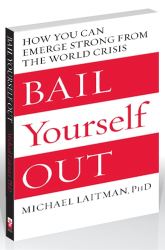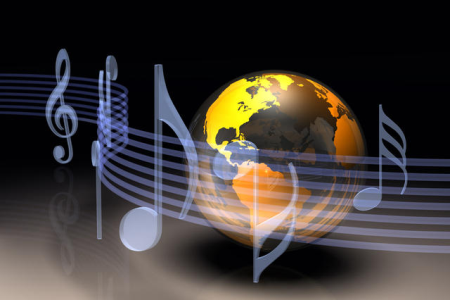Calling All Trend Setters: You Can Making Giving Fab
In order to achieve the necessary shift in our perception and lifestyle, that can help us solving the global crisis, and build a sustainable future, we have to introduce a new global education system, and change the values prevalent in society. In this change, the media has a primary role.
But as important as media is to our culture, it cannot make the required shift in spirit all by itself. To complete the shift in our thinking, we must engage actors, singers, and other public idols and celebrities in the process. Their productions are displayed not only on television, but also on the Internet, in movie theatres, and on the radio, and are vital to getting the new message across.
It is hard to predict exactly how the arts will develop once we become familiar with the giving half of reality. Because we have never tried it on a large scale, we cannot tell how things will unfold once unity and giving are in vogue. The ideas below will describe possible shifts in cinema and theatre, but the rules that apply to this art form also apply to the more traditional arts such as painting and sculpturing.
Who Else Wants Movies that Celebrate Humanity’s Full Potential?
The visual arts are the most powerful means of influence. Up to 90 percent of the information we receive on our surroundings is visual information. For this reason, a shift in our thinking must begin with what we see, even before we change what we hear.
On the surface, the plots of most movies and plays can remain pretty much the same: a fight for a just cause, a love story, or even a tragedy. But behind each plot should be a subtext that conveys a message of unity.
There have been many apocalyptic films describing how humanity has destroyed the planet and is being punished for its sins with chaos, endless heat waves, war, and depletion of food and water. But art should not confine itself to doomsday images. Instead, it should provide information about the full picture of reality—the two forces in life, how they interact, what happens if we tip the balance, and what happens if we help to sustain it. Otherwise, arts, and especially the very popular visual arts, will not achieve their objectives: to inform us of life’s two forces and to show us how we can balance them.
To give people a reason to watch and re-watch movies and plays, the plots must be credible, providing valid hope and a real prospect of positive change. While a film’s starting point can be our current reality, it must include some form of reasoning about what brought us to our current state. When people discover that the cinema has become a place where they can get information that will improve their lives, they will begin to flock to the movies!
Think of how we teach our children to cross the street, how meticulously and lovingly we explain to them time and time again how to wait for the green light, and how to only cross at designated crossings. This is vital information, and without it, they could risk their lives if they were to venture alone on the street.
Today, information about restoring balance in nature and in humanity is just as vital, and hence in high demand.
But there is more to this shift than survival. This crisis is a springboard for unfathomable improvement in our daily lives. Until today, we have been focusing on how much we can receive. In fact, we did not even know that we were being run by a desire to receive; we simply wanted to enjoy. Because we did not know about the interplay between the two desires that make up life, we kept searching for pleasure at a superficial level, and hence never experienced lasting joy and happiness.
But life’s drama evolves in two directions (which are both opposite and parallel): collaboration and self-fulfillment. In the whole of reality, self-fulfillment is possible only through collaboration with others.
Put simply, nature supports and promotes uniqueness only as a mutually complementing part of the whole; therefore, the personal fulfillment of creatures is possible only when they collaborate and contribute to their environment. When they want to develop themselves at the expense of the environment, nature will either extinguish them or forcefully balance their numbers.
Although we have known this law of nature for a long time, we have been acting as if we were not part of the ecosystem called “Planet Earth.” Even worse, among ourselves we feel that one society or sect can be superior to another. Yet nature evidently demonstrates that nothing is redundant and no part of any element in nature is superior to another. Why, then, do we think we have a prerogative that no other part of nature has—to patronize and oppress other peoples and species? Where has this arrogance come from, if not from ignorance?
Because we are ignorant of the desire to give, which gives us our strength and wisdom, we relate them to ourselves. If we were aware that we, too, are a product of the two desires that form life, we would know how to thrive in this world, along with the whole of nature.
How difficult is it to make films that teach us this, and show us the benefits of self-fulfillment through collaboration? Imagine that we all knew that we were united with all other people, that we were supported by all other people in the world, and that all they wanted was for us to realize our potential to the maximum? How wonderful would life be if every person contributed all of his or her talents to society, and received the support and appreciation of society in return?
Imagine the movies showing us that!
You Don’t Have to be a Musician to Understand the Benefit of Positivity Infused Music
Music is one of the most popular art forms; it can be a powerful promoter of new concepts. Today, more than ever, genres such as rock and hip-hop are powerful means of expressing social concepts. Ever since The Beatles introduced Indian music in the 1960s, ethnic music has been a popular means of promoting ethnic recognition and cultural integration. Indeed, globalization is a welcome addition to music, and today most musicians play several types of music, some of which come from cultures outside their homelands. Thus, music merits a chapter all to itself.
Like all forms of art, music is a special language that expresses the particular artist’s inner world. Each type of music represents a different type of desire to receive, and can therefore express a different type of balance with the desire to give. To keep it simple, let’s divide music into two groups: vocal and instrumental.
With vocal music (songs), it is slightly easier to define the change required for it to fit into the new direction. As with cinema, the themes can remain pretty much the same. And as with cinema, behind each song should be a subtext that conveys a message of unity and expresses both desires in reality—to give and to receive.
Music is an expression of the self, of the deepest emotions of the artist. Therefore, if music is to convey a message of unity and balance between giving and receiving, it is very important that the performing artist be well aware of how these forces interact. Because we cannot fake how we express our inner world, artists must personally experience the unity and the interplay and connectedness of the two forces, if they are to convey them artistically.
As a result, every song should convey a new sense of freshness and vitality. There is no need to create new genres. We already have a wonderful variety: pop, hip-hop, rock n’ roll, jazz, classical music, and ethnic music of every type. All are genuine expressions of our inner being, and there is no need to change them. All we need to change is the underlying message: instead of focusing on a couple’s troubled relationship, the words can highlight their efforts to discover the unity in nature.
As we learn about the giving side of nature, we will also be able to create new texts for songs. Such texts can express dialogues between the desire to give and the desire to receive as they occur between people or in nature. If you think about it, the constant drive of the desire to give to find ways to express itself through the desire to receive is very similar to the way a man seeks new ways to express his love for his woman (or the other way around). What could be more inspiring than to dress that ache of love in lyrics and adorn it with a melody?
The Real Reason Why Bach and Mozart are as Relevant Today as they Ever Were
Instrumental music is a different tune altogether. The focus on harmony in Western music makes it an almost natural medium to convey unity and balance. Many famed composers—most notably Bach and Mozart—paid close attention to keeping their music balanced and harmonious. In fact, classical music, particularly Mozart’s, is so well balanced and wholesome that the University of Leicester, UK, found that it increases milk production in dairies! Although the composers were probably unaware of the depth to which this balance goes, or the purposes for which their music would one day be used, it is this quality that has assured their popularity up to the present day.
But balance exists not only in Western music; it is essential to almost any type of music, especially indigenous music. Today, however, balance must be kept not just because we like the sound of it, but because it can help us express a whole new side of reality. The result can be extremely passionate, extremely soft, extremely fast, or well tempered. But whatever the genre, the impact of such music on the listener will be unmatched, precisely because it expresses our life force!
Today, the music of Bach, Mozart, Beethoven, and Verdi seems rich and colorful to us. But compared to music that expresses the perception of both desires, it will be like the difference between seeing the world in only two dimensions, or in three.
 “Little Known Ways Art Can Transform the World” is based on the book, Bail Yourself Out: How You Can Emerge Strong from the World Crisis by Dr. Michael Laitman.
“Little Known Ways Art Can Transform the World” is based on the book, Bail Yourself Out: How You Can Emerge Strong from the World Crisis by Dr. Michael Laitman.


In my opinion, the only music that awakes within a person’s soul the desire to bestow, is music composed by a true Mekubal (Kabbalist)(such as Rabbi Shimon Bar Yochai, the Ari Hakadosh, all the Mekubalim who wrote the songs we sing after meals on the Sabbath, the Baal Hasulam and Rabash.
Songs written by students of Kabbalah who are still living within their own ego and certainly composers such as Mozart and Bach who never attempted to overcome their ego cannot possibly create music that can empower the Neshama (soul) to rise to the next level of revelation.